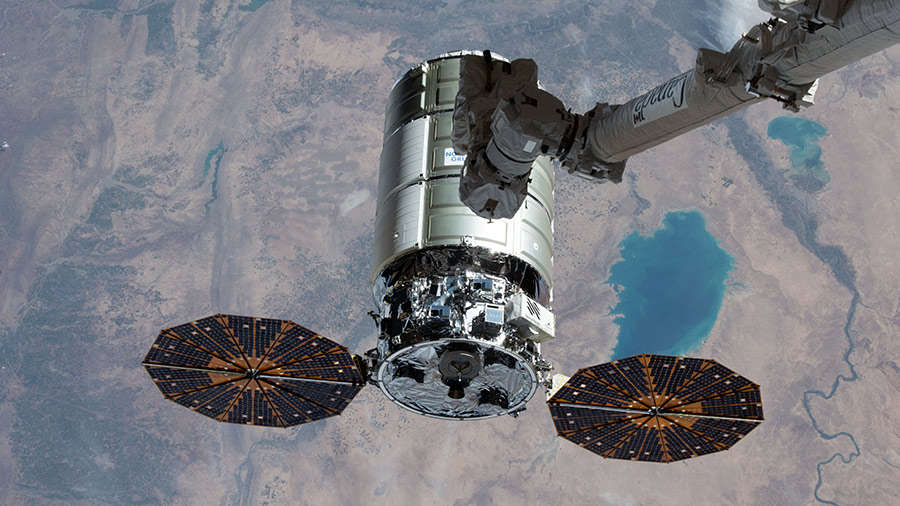Crew Kicks Off Skin Aging, Cancer Research and Unloads New Cargo Craft

New human research is underway aboard the International Space Station using the microgravity environment to gain unique insights into aging skin cells and cancer tumors. The Expedition 66 crew also continues to unpack cargo from a U.S. cargo craft while keeping up with eye checks to ensure the crew stays healthy in space.
Weightlessness provides scientists a unique opportunity to observe phenomena not possible in Earth’s gravity. Biology including microbes, plants, and humans, changes in response to microgravity and observations are helping NASA plan longer missions farther into space. Doctors on Earth also use the information to improve numerous treatments and conditions on the ground.
Two new biology experiments delivered on Monday aboard the Cygnus space freighter are already being activated on the orbital lab. NASA Flight Engineer Thomas Marshburn set up the Microgravity Science Glovebox and began exploring the cellular and molecular alterations taking place in samples of skin cells. NASA Flight Engineer Mark Vande Hei is observing tumor cells in the Life Science Glovebox to better understand the onset and progression of cancer. Both investigations have the potential to inform space research techniques and improve therapies on Earth.
Astronauts Raja Chari of NASA and Matthias Maurer of ESA (European Space Agency) worked throughout Wednesday continuing to offload the 8,300 pounds of cargo delivered Monday inside Cygnus. NASA Flight Engineer Kayla Barron Barron deactivated space botany hardware then photographed cotton cell samples being harvested for the Plant Habitat-05 space agriculture study.
Working in the orbiting lab’s Russian segment, Commander Anton Shkaplerov studied plasma physics while Flight Engineer Pyotr Dubrov recorded his heart activity wearing a portable electrocardiogram. The duo from Roscosmos then wrapped up the day with more eye and retina checks using medical imaging gear.
from Space Station https://ift.tt/SiBwIO1
Comments
Post a Comment